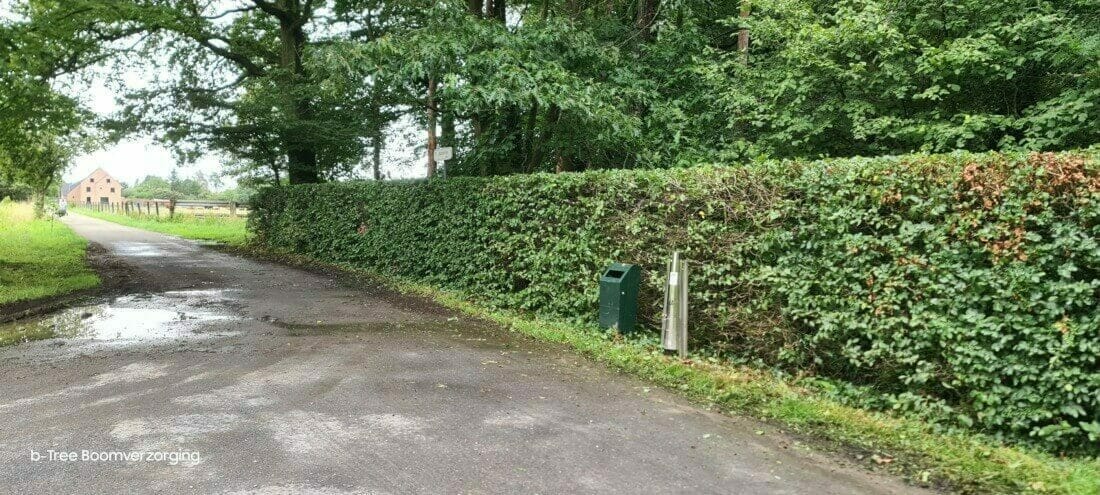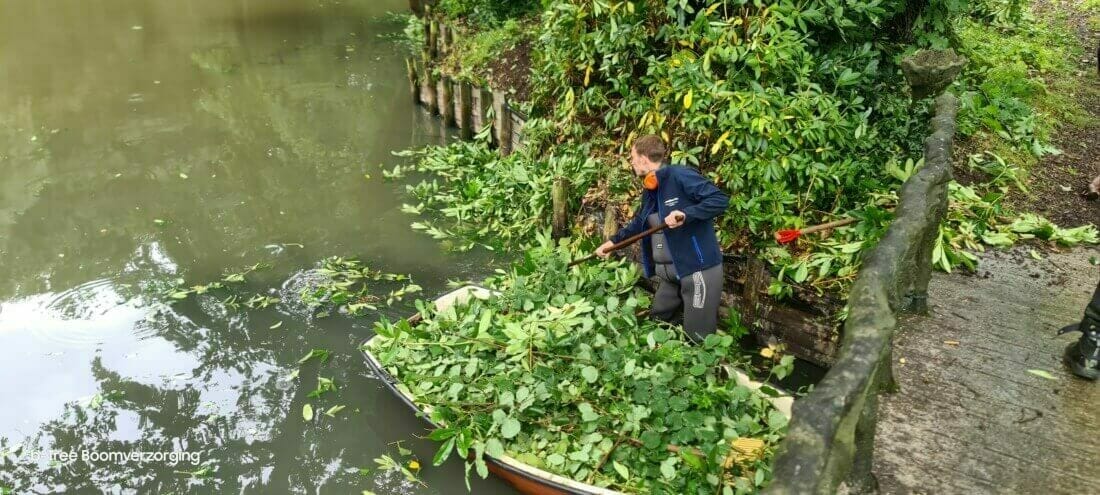

Pruning hedges and hedges
How to prune or shear hedges and how to maintain hedges
First maybe a little about the difference between a hedge and a hedge. And then more about pruning or shearing hedges and how to best prune and maintain hedges.
What is the difference between a hedge and a hedge?
Hedges and hedges are two common elements in garden design and landscaping, but they are often confused. Although they are similar in their purpose of creating partitions and providing privacy, there are subtle differences between the two. Here we explain the detailed difference between hedges and hedges. And clear examples will give you a better idea of their specific features and applications.
What is a hedge?
A hedge refers to a linear planting of shrubs, usually of the same species, planted at regular intervals. They are pruned to form a dense and uniform barrier. Hedges usually have a formal appearance, are sleek and can be used as boundary fences, privacy walls or to define different parts of a garden. They can also be used to break wind and dampen sound. Hedges can be either evergreen or deciduous, depending on the plant species chosen.
What is a hedge?
A hedge is a more informal and natural separation, usually consisting of a mix of trees, shrubs and sometimes climbing plants. They are much less sleek and more organic in shape. Hedges are less formal than hedges and often have a more natural and casual appearance. They can be used to mark property lines, provide shelter for wildlife and add a rustic feel to a landscape. Hedges tend to be less rigid in their shape and require less regular pruning than hedgerows.
Examples of hedges
1. Boxwood hedge (Buxus sempervirens): A common choice for formal hedges due to its compact growth and dense leaves. Box hedges are often used in geometric patterns and they can be pruned into clean lines to give a more formal appearance.
2. Cherry Laurel (Prunus laurocerasus): also a common one and an evergreen hedge that grows quickly and forms a lush barrier. Cherry laurel hedges are pruned to maintain a neat appearance.
3. Yew hedge (Taxus baccata): a slow-growing, evergreen hedge with dark green needles. Yew hedges are often used in formal gardens and can create impressive, clean lines. You can also make yew hedges much higher and more massive than, for example, box hedges.
Examples of hedges
1. The mixed flowering hedge: an informal hedge consisting of various flowering shrubs such as butterfly bushes, weigelas and hydrangeas. These flowering hedges add color and appeal to a landscape. They are also very useful for flying insects that come to collect their nectar. Which in turn supports and benefits biodiversity.
2. A hawthorn hedge (Crataegus spp.): This is a natural hedge made from hawthorn bushes that have small white or pink flowers (depending on the species) and produce red berries. Hawthorn hedges provide shelter and food for small birds. Because small birds can easily pass along the spines that the hawthorn hedge has on its branches, but large birds of prey cannot.
3. Ivy hedge (Hedera spp.): This is a mix of ivy varieties trained along a wire or fence to create a green, living barrier. Ivy hedges can add a rustic look to a garden.
And are extremely useful because this native plant blooms up to twice a season and provides nectar for insects as well as nesting habitat for birds.
Although hedges and hedges both serve to mark boundaries and provide privacy, they differ in their formal character and choice of plants. Hedges are usually made from one type of shrub and have a formal look, while hedges provide a more informal and natural barrier with a mix of plants. By understanding these sometimes subtle differences, gardeners and landscape architects can make the right choice between hedges and hedges based on the desired appearance, their function and the level of maintenance.
Pruning hedges, how do you work and what do you take into account?
Hedges and hedges are important elements in a garden, they provide privacy, structure and an attractive green backdrop. Trimming hedges and hedges is vital to maintain their shape and keep them healthy. Here are some things you should take into account for the respectful pruning of your hedges and hedges.
When is the best time to prune your hedge or hedge?
The right time for pruning varies depending on the type of hedge. In general, it is best to perform pruning in late spring or early summer when growth is active. However, avoid pruning during the breeding season as this will disturb birds nesting in the hedges.
Gradual pruning or phased pruning
When pruning hedges and hedges it is better to proceed gradually. Do not prune too much at once, but maintain the natural shape and contour of the hedge. Regular light pruning is usually more effective and less stressful for the plants than heavy pruning. In other words, if you have vigorous hedges or hedges, prune more than once per growing season.
Use the right tools
Be sure to use sharp and clean pruning shears or hedge trimmers to make neat cuts. Blunt tools can damage the plants and leave uneven and frayed pruning wounds, causing the pruning wounds to dry out much more. Which in turn delays the healing of the pruning wounds.
Straight lines and organic shapes
If you have a formal hedge, you can use a rope or batten to create straight lines when pruning. For informal hedges, simply follow the natural growth form and prune carefully to maintain a neat and tidy appearance. Do not create curves that are too small for organic shapes, but create soft and larger curves, which results in a more soothing final image.
Avoid pruning hedges and hedges in direct sunlight
Try to prune on cloudy days or in the early morning or late afternoon to prevent the sun from drying out the pruned areas before the plants have a chance to recover.
Cleaning up and processing pruning waste
After pruning, remove all branches and leaves to prevent the hedge from attracting diseases or pests. If you can, chop and compost the pruning waste. Then feed it back as mulch between your beds. That suddenly becomes a soil improvement and nutrient buffer for the coming years.
Trimming hedges and hedges requires patience and attention to detail. The goal is to maintain a well-defined shape while respecting the natural habit of the plant. With careful and regular pruning, your hedges and hedges will thrive and become beautiful features in your garden landscape.
Specific pruning techniques for different hedge types
Depending on the type of hedge you have in your garden, there are different pruning techniques you can use to promote optimal growth and shape.
Shearing deciduous hedges
Hedges such as beech hedges (Fagus sylvatica and Fagus sylvatica purpurea), hornbeam (Carpinus betulus) and privet (Ligustrum vulgare or Ligustrum ovalifolium) are deciduous species. Prune these hedges in late spring or early summer, just after the period of active growth. Only remove the new greenery that has sprouted and avoid pruning back old wood, as this can lead to baldness in the hedge. Unless there is overdue pruning, then it is often necessary to prune more. However, be careful with this.
Shearing evergreen hedges
Evergreen hedges, such as yew (Taxus baccata), boxwood (Buxus sempervirens) and conifers (Cupressocypares leylandii, Thuja occidentalis, Thuja plicata, Chamaecyparis lawsoniana), retain their leaves all year round. These hedges can be pruned in late spring and again in early autumn if necessary. It is important to never prune beyond the green leafy portion as brown portions will not grow back. Most, if not almost all, conifers are not regenerative.
Topiary
For formal hedges, such as box hedges, you can use topiary to create specific geometric shapes, such as spheres, cones or straight lines. Use stencils or frames as a tool to achieve even and symmetrical shapes. Carry out the topiary gradually so that the hedge can adapt to the new shape. And can grow in again.
Informal hedge pruning
Informal hedges often have a natural and loose appearance. To maintain their natural charm, it is sufficient to prune lightly to maintain a neat and well-groomed appearance without disturbing their natural shape. Sometimes it is sufficient to shorten only the strongly sprouting branches. But remember to avoid overdue pruning.
Contour pruning
Contour pruning is about maintaining the natural curves and lines of the hedge. Work gradually, following the contour of the hedge to maintain a natural, organic shape.
Maintenance of the hedge trimmer or hedge trimmer and the pruning tools
To ensure that your hedges and hedges are pruned successfully, it is important to maintain your pruning tools properly. Sharp and clean blades make neat pruning wounds and minimize the risk of damage to the plants.
Lubricate and clean the blades regularly, even during pruning sessions during the day, for example with a (biological) resin remover. And clean the hedge trimmer at the end of the day, after each use, to prevent rust formation.
Tip: never place a freshly sprayed hedge trimmer on natural stone on a patio, for example. This can create stubborn stains. Or with the knives in the sand at the bottom. Grains of sand quickly dull your hedge trimmer.
Summary of pruning hedges and hedges
Trimming hedges and hedges is a crucial part of the maintenance of your garden and contributes to the structure and appeal of the landscape. By applying the correct timing and techniques, you respect the natural habit of the plants and promote healthy growth. Remember to work patiently and carefully, and your garden will reward you with beautifully radiant and flowering hedges that are a source of pride and joy.
Contact us without obligation for hedge and hedge trimming
Do you have to ask about the pruning of hedges and hedges, including any overdue pruning, and if you want to be sure of the good and most qualitative approach to the pruning work, do not hesitate to contact us can be contacted without obligation.